Items
Tag
english
-
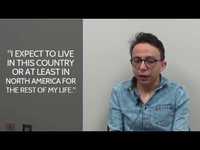 Colombia to Canada: A journey of self discovery and cultural identity. In this video, Emilio Borja discusses his journey with his cultural identity. Borja discusses topics such as his life before Canada, his reasons for coming to Canada, what he misses about Colombia, and what he likes about life in Canada. All these topics build up to Borja’s discussion of cultural identity. Borja tells us what he feels his personal cultural identity is and explains why he feels this way. Borja then explains his definition of cultural identity, and how he believes cultural identity is fluid and able to change over time. He also explains why he feels this fluidity can be both good and bad.
Colombia to Canada: A journey of self discovery and cultural identity. In this video, Emilio Borja discusses his journey with his cultural identity. Borja discusses topics such as his life before Canada, his reasons for coming to Canada, what he misses about Colombia, and what he likes about life in Canada. All these topics build up to Borja’s discussion of cultural identity. Borja tells us what he feels his personal cultural identity is and explains why he feels this way. Borja then explains his definition of cultural identity, and how he believes cultural identity is fluid and able to change over time. He also explains why he feels this fluidity can be both good and bad. -
 Community of Song: Latin Music in Sharing Identity and Promoting Cultural Humility In this video, Colombian-Canadian singer-songwriter Gerry Rozo, through a retelling of his personal experiences, explores the role of music in cultural identity and community-building. He discusses his journey to Canada, the progression of his music career, his thoughts on cultural humility in Canadian society, and the ways in which he believes music can be a conduit for both the preservation of cultural identity and promotion of intercultural communication.
Community of Song: Latin Music in Sharing Identity and Promoting Cultural Humility In this video, Colombian-Canadian singer-songwriter Gerry Rozo, through a retelling of his personal experiences, explores the role of music in cultural identity and community-building. He discusses his journey to Canada, the progression of his music career, his thoughts on cultural humility in Canadian society, and the ways in which he believes music can be a conduit for both the preservation of cultural identity and promotion of intercultural communication. -
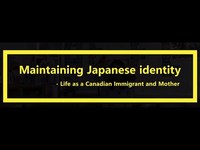 Maintaining Japanese identity: Life as a Canadian immigrant and Mother The video explores the life of Chigusa Peters who is a new Japanese immigrant to London, Ontario and also a mother of three daughters. During the interview, Chigusa first talks about her own identity and the difficulties she encountered in adapting to Canadian culture. She also discusses the differences between life in Canada and life in Japan. In the hopes of passing on Japanese traditions to her daughters, she takes them to karate classes every Monday and Wednesday, and to the Japanese language school every Saturday morning. The video ends with her talking about which aspects of Japanese culture she hopes her kids will be able to learn through these activities.
Maintaining Japanese identity: Life as a Canadian immigrant and Mother The video explores the life of Chigusa Peters who is a new Japanese immigrant to London, Ontario and also a mother of three daughters. During the interview, Chigusa first talks about her own identity and the difficulties she encountered in adapting to Canadian culture. She also discusses the differences between life in Canada and life in Japan. In the hopes of passing on Japanese traditions to her daughters, she takes them to karate classes every Monday and Wednesday, and to the Japanese language school every Saturday morning. The video ends with her talking about which aspects of Japanese culture she hopes her kids will be able to learn through these activities. -
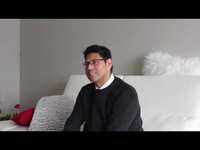 Breaking Boundaries: From Guatemala to Canada. How we share similarities, regardless of location. In this portrait, Juan Carlos Parada explains his definition of culture and provides his audience with anecdotal references to create a vibrant portrayal of his cultural background. Reminiscing on his immigration to Canada, Juan Carlos tackles the hardships of being a minority experienced by both himself and his parents. He points out his core belief of how although each culture may have superficial differences, once one looks past those differences, every individual has similarities that bring them together. In addition, Juan Carlos opens up about misconceptions associated with his culture, based on his own experiences, and concludes his story with ways to overcome stigmas. In conclusion, although Juan Carlos narrates this story through his own experiences, this portrait is one that can resonate with many people once they seek to look past differences.
Breaking Boundaries: From Guatemala to Canada. How we share similarities, regardless of location. In this portrait, Juan Carlos Parada explains his definition of culture and provides his audience with anecdotal references to create a vibrant portrayal of his cultural background. Reminiscing on his immigration to Canada, Juan Carlos tackles the hardships of being a minority experienced by both himself and his parents. He points out his core belief of how although each culture may have superficial differences, once one looks past those differences, every individual has similarities that bring them together. In addition, Juan Carlos opens up about misconceptions associated with his culture, based on his own experiences, and concludes his story with ways to overcome stigmas. In conclusion, although Juan Carlos narrates this story through his own experiences, this portrait is one that can resonate with many people once they seek to look past differences. -
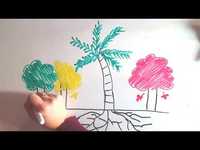 Small Country, Big Celebrations: The Role of Salvadoran Celebrations in Cultivating Identity and Belonging In this video, Claudia calls attention to a part of her culture that is often overlooked. In contrast to holidays celebrated in Canada, national celebrations in El Salvador take place out on the streets and bring together an entire community. She considers the major role that climate and religion play in building a sense of community in El Salvador. Drawing on childhood memories, she describes celebrations such as Virgen de Guadalupe, Día de la Cruz, and Semana Santa, which are all rooted in a shared religion. In addition, she reflects on the unifying power of street celebrations, and how they function to gather people of different backgrounds in a common place. In the conclusion, Claudia provides her definition of community which is influenced by her experiences with celebrations and traditions. Her definition further encompasses what it means to be a part of a community in a new country.
Small Country, Big Celebrations: The Role of Salvadoran Celebrations in Cultivating Identity and Belonging In this video, Claudia calls attention to a part of her culture that is often overlooked. In contrast to holidays celebrated in Canada, national celebrations in El Salvador take place out on the streets and bring together an entire community. She considers the major role that climate and religion play in building a sense of community in El Salvador. Drawing on childhood memories, she describes celebrations such as Virgen de Guadalupe, Día de la Cruz, and Semana Santa, which are all rooted in a shared religion. In addition, she reflects on the unifying power of street celebrations, and how they function to gather people of different backgrounds in a common place. In the conclusion, Claudia provides her definition of community which is influenced by her experiences with celebrations and traditions. Her definition further encompasses what it means to be a part of a community in a new country. -
 Integrating Japanese Culture into Canada In this portrait, Keiko Yano talks about the different aspects of the Japanese culture being adapted to Canada such as Girl’s Day and tea ceremony. She explains her participation in the community and her wish to keep the culture alive within her daughters. Keiko’s daughter, Erika, then briefly explains why she continues to learn the Japanese language. After that Keiko’s husband, Chris, describes the significance of Buddhism practices to him and discusses the activeness of the Japanese community in London. The portrait then ends with Keiko expressing her renewal of self and deeper appreciation in the Japanese culture by coming to Canada.
Integrating Japanese Culture into Canada In this portrait, Keiko Yano talks about the different aspects of the Japanese culture being adapted to Canada such as Girl’s Day and tea ceremony. She explains her participation in the community and her wish to keep the culture alive within her daughters. Keiko’s daughter, Erika, then briefly explains why she continues to learn the Japanese language. After that Keiko’s husband, Chris, describes the significance of Buddhism practices to him and discusses the activeness of the Japanese community in London. The portrait then ends with Keiko expressing her renewal of self and deeper appreciation in the Japanese culture by coming to Canada. -
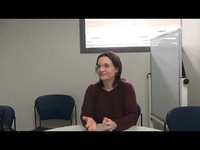 The German Democratic Republic: Before and Beyond This project is an interview with Dr. Nina Rosenbusch, a woman born in the German Democratic Republic (GDR). Rosenbusch was only a teenager when the Berlin Wall fell down in 1989 and so she is part of the generation of Germans who came into adulthood in the newly reunified Germany. This interview seeks to understand the legacy of the GDR’s culture for the citizens of modern Germany. In particular, the discussion focuses on the generation of Rosenbusch’s parents who only knew Germany as two separated states, unlike the generation of Rosenbusch’s grandparents who were able to remember a previously unified Germany. The involvement of the state in daily life is also discussed, with a focus on the German secret police service, called the Stasi. As Rosenbusch’s family did not protest against the state, they were not as affected as some individuals but were nonetheless limited in what they could do and say. Ultimately, the German Reunification was and is very popular in the former GDR, although there are still slight cultural differences and difficulties for those who lived most of their lives before 1989.
The German Democratic Republic: Before and Beyond This project is an interview with Dr. Nina Rosenbusch, a woman born in the German Democratic Republic (GDR). Rosenbusch was only a teenager when the Berlin Wall fell down in 1989 and so she is part of the generation of Germans who came into adulthood in the newly reunified Germany. This interview seeks to understand the legacy of the GDR’s culture for the citizens of modern Germany. In particular, the discussion focuses on the generation of Rosenbusch’s parents who only knew Germany as two separated states, unlike the generation of Rosenbusch’s grandparents who were able to remember a previously unified Germany. The involvement of the state in daily life is also discussed, with a focus on the German secret police service, called the Stasi. As Rosenbusch’s family did not protest against the state, they were not as affected as some individuals but were nonetheless limited in what they could do and say. Ultimately, the German Reunification was and is very popular in the former GDR, although there are still slight cultural differences and difficulties for those who lived most of their lives before 1989. -
 Seeing the World Through a Colombian Lens: Travel Stories from Roberto Mocetón Roberto Mocetón shares the cultural importance of travel in Colombia. He reflects on his motivations for personal travel after moving from Bogotá, Colombia to London, Canada with his family. Roberto views travelling as an opportunity to connect with his family, become more globally-minded, and pass along these values with his son. He highlights that travel is a way for us to learn from and connect with others. In this video, he also reflects on the similarities and differences between the role of travel in Colombian and Canadian cultures.
Seeing the World Through a Colombian Lens: Travel Stories from Roberto Mocetón Roberto Mocetón shares the cultural importance of travel in Colombia. He reflects on his motivations for personal travel after moving from Bogotá, Colombia to London, Canada with his family. Roberto views travelling as an opportunity to connect with his family, become more globally-minded, and pass along these values with his son. He highlights that travel is a way for us to learn from and connect with others. In this video, he also reflects on the similarities and differences between the role of travel in Colombian and Canadian cultures. -
 The Misunderstood: Immigrants in Canada This project displays an in-depth personal view of the experiences and challenges immigrants face during their journey to Canada. Through the personal anecdotes from Johanna Bran we discover her immigration story from Nicaragua to Canada, as well as discuss some systemic challenges and misconceptions immigrants face within Canada. “The Misunderstood: Immigrants in Canada” shows how all Canadian immigrants have their own story, but many share the same struggles and barriers living as immigrants in Canada today.
The Misunderstood: Immigrants in Canada This project displays an in-depth personal view of the experiences and challenges immigrants face during their journey to Canada. Through the personal anecdotes from Johanna Bran we discover her immigration story from Nicaragua to Canada, as well as discuss some systemic challenges and misconceptions immigrants face within Canada. “The Misunderstood: Immigrants in Canada” shows how all Canadian immigrants have their own story, but many share the same struggles and barriers living as immigrants in Canada today. -
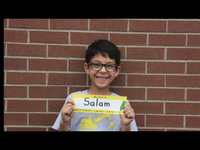 First Day of School: The Story of Iman's Son's First Day of School in Canada
First Day of School: The Story of Iman's Son's First Day of School in Canada -
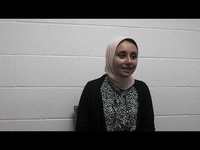 Exploring Multiculturalism as a way of life This portrait follows the story of Marwa Ali, a German teacher in London, Ontario. She was born in Egypt, where she spent her childhood, and had the opportunity to attend a German school. In this video she talks about what her experience has been coming to Canada and how growing up with the Egyptian and German cultures has affected her mindset. After a break, she is now living again in Canada and will explain how her multiculturalism has been an asset and how open-mindedness is important in our modern life.
Exploring Multiculturalism as a way of life This portrait follows the story of Marwa Ali, a German teacher in London, Ontario. She was born in Egypt, where she spent her childhood, and had the opportunity to attend a German school. In this video she talks about what her experience has been coming to Canada and how growing up with the Egyptian and German cultures has affected her mindset. After a break, she is now living again in Canada and will explain how her multiculturalism has been an asset and how open-mindedness is important in our modern life. -
 From the Manizales Home to the London Home: A Youth's Story of Immigrating from Colombia to Canada This portrait features an interview with Juan Gaviria. During this interview, he shares stories about his experiences of moving from Colombia to Canada as a youth with his family. Juan also shares his opinions on “what makes a home”. Juan talks about how he believes Colombia and Canada are both home to him, yet, he feels many differences between his two homes. In addition, Juan has also shared some specific stories about the challenges he has faced during his process of making London his new home as well as some of his heartwarming encounters in the London Latino-Canadian Community, that have helped to minimize these challenges for him. At the end of the video, Juan shares some examples of the events and activities in London that remind him of his heritage culture and his Colombia home. Juan’s sense of “home” indicates his sense of belonging to his new community. This also marks that his journey of settling in London has shaped his new identity as a Latino-Canadian. In addition, his stories have vividly illustrated the importance and impacts of cultural humility and have demonstrated how an understanding of only the surface culture without an understanding of the deep culture can cause misunderstandings and lack of respect among individuals who have different cultural backgrounds.
From the Manizales Home to the London Home: A Youth's Story of Immigrating from Colombia to Canada This portrait features an interview with Juan Gaviria. During this interview, he shares stories about his experiences of moving from Colombia to Canada as a youth with his family. Juan also shares his opinions on “what makes a home”. Juan talks about how he believes Colombia and Canada are both home to him, yet, he feels many differences between his two homes. In addition, Juan has also shared some specific stories about the challenges he has faced during his process of making London his new home as well as some of his heartwarming encounters in the London Latino-Canadian Community, that have helped to minimize these challenges for him. At the end of the video, Juan shares some examples of the events and activities in London that remind him of his heritage culture and his Colombia home. Juan’s sense of “home” indicates his sense of belonging to his new community. This also marks that his journey of settling in London has shaped his new identity as a Latino-Canadian. In addition, his stories have vividly illustrated the importance and impacts of cultural humility and have demonstrated how an understanding of only the surface culture without an understanding of the deep culture can cause misunderstandings and lack of respect among individuals who have different cultural backgrounds. -
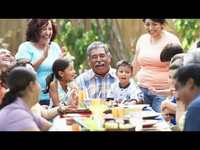 Maintaining & Sharing your Cultural Identity: Through Education, Exposure, & Experience The video explores the cultural identity of Jose. A. Casanova, with a particular focus on how food serves as reminder of where he has come from. We not only talk about how food has shaped who he is today, but also the people who have influenced him significantly, including his mother. Over time, his core values have not diminished despite a change in location. Through passing on values from his Venezuelan culture and his wife’s Colombian culture to his children, he actively encourages them to be culturally humble and to embrace their diverse cultural identity. He does this by emphasizing that they are not just from one community, but they are from three: Canadian, Venezuelan and Colombian. He provides advice on the best way to preserve one’s cultural identity, so that one can maintain one’s roots and not forget where one has come from. He also stresses on the importance of helping others because having gone through the challenges that come with being a new immigrant in Canada himself, he realizes a little help can go a long way.
Maintaining & Sharing your Cultural Identity: Through Education, Exposure, & Experience The video explores the cultural identity of Jose. A. Casanova, with a particular focus on how food serves as reminder of where he has come from. We not only talk about how food has shaped who he is today, but also the people who have influenced him significantly, including his mother. Over time, his core values have not diminished despite a change in location. Through passing on values from his Venezuelan culture and his wife’s Colombian culture to his children, he actively encourages them to be culturally humble and to embrace their diverse cultural identity. He does this by emphasizing that they are not just from one community, but they are from three: Canadian, Venezuelan and Colombian. He provides advice on the best way to preserve one’s cultural identity, so that one can maintain one’s roots and not forget where one has come from. He also stresses on the importance of helping others because having gone through the challenges that come with being a new immigrant in Canada himself, he realizes a little help can go a long way. -
 (Re)building a Career in Canada: A Story of Determination, Resilience and Success Salah (Sal) Al-Jajah is an architect who specializes in 3D rendering. After a successful career in Lebanon designing buildings in Dubai, Saudi Arabia, Erbil, Iraq, Egypt, England and France, Sal and his family immigrated to Canada in 2014. Sal recognized that his talent in rendering was “missing from the market” in Canada and was determined to seek out a job in London, Ontario. After knocking on many unopened doors, Sal ‘s unrelenting determination provided him with a chance to prove himself. In this video, Sal shares his success in “rebuilding” his career in Canada from start to finish. This video explores the challenges of finding employment in Canada as an immigrant. Sal’s story nuances themes of perseverance, dedication and familial love as he attempts to support his wife and three children. Sal’s success adds to the discourse surrounding immigration in Canada, by challenging stereotypes and prejudices related to immigrants in the Canadian workforce.
(Re)building a Career in Canada: A Story of Determination, Resilience and Success Salah (Sal) Al-Jajah is an architect who specializes in 3D rendering. After a successful career in Lebanon designing buildings in Dubai, Saudi Arabia, Erbil, Iraq, Egypt, England and France, Sal and his family immigrated to Canada in 2014. Sal recognized that his talent in rendering was “missing from the market” in Canada and was determined to seek out a job in London, Ontario. After knocking on many unopened doors, Sal ‘s unrelenting determination provided him with a chance to prove himself. In this video, Sal shares his success in “rebuilding” his career in Canada from start to finish. This video explores the challenges of finding employment in Canada as an immigrant. Sal’s story nuances themes of perseverance, dedication and familial love as he attempts to support his wife and three children. Sal’s success adds to the discourse surrounding immigration in Canada, by challenging stereotypes and prejudices related to immigrants in the Canadian workforce. -
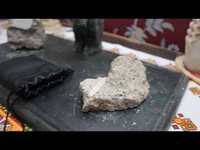 Berlin: An Anchor Of Culture Beginning with Evelyn’s cultural connection with Canada and how that relates to her experiences in Berlin as a text overlay. We explore Evelyn’s first memories in the aftermath of World War 2. Afterward, we transition into life during the rebuilding of Berlin and her experiences transitioning between East and West Berlin before the Berlin Wall is built. Evelyn recounts her visits to East Germany after the wall has been built and the struggles faced with the new reality of strict border checks and a wall separating east and west. Finally, Evelyn reflects at the lasting effects the division has had on the German people and the entire country itself, as well as what her connection to Berlin means to her.
Berlin: An Anchor Of Culture Beginning with Evelyn’s cultural connection with Canada and how that relates to her experiences in Berlin as a text overlay. We explore Evelyn’s first memories in the aftermath of World War 2. Afterward, we transition into life during the rebuilding of Berlin and her experiences transitioning between East and West Berlin before the Berlin Wall is built. Evelyn recounts her visits to East Germany after the wall has been built and the struggles faced with the new reality of strict border checks and a wall separating east and west. Finally, Evelyn reflects at the lasting effects the division has had on the German people and the entire country itself, as well as what her connection to Berlin means to her. -
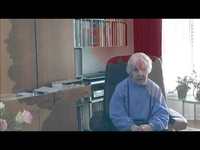 Home in Canada: Immigrant from Germany to Canada in 1980s Reinhild came from Chemnitz, Germany. She immigrated with her family to Canada in the 1980s. She taught mathematics in Western before. This video will introduce her immigrant process and the factors she thinks affect her integrated into Canada.
Home in Canada: Immigrant from Germany to Canada in 1980s Reinhild came from Chemnitz, Germany. She immigrated with her family to Canada in the 1980s. She taught mathematics in Western before. This video will introduce her immigrant process and the factors she thinks affect her integrated into Canada. -
 Finding Home: The Waves of Life A story about the struggles and hardships that come with moving to multiple countries within a short time period. What does settling mean and where does one find home.
Finding Home: The Waves of Life A story about the struggles and hardships that come with moving to multiple countries within a short time period. What does settling mean and where does one find home. -
 Fostering a Sense of Community: An Immigration Story An Immigration Story
Fostering a Sense of Community: An Immigration Story An Immigration Story -
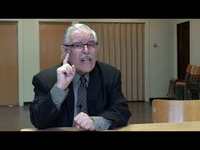 Creating Bridges: An Interview with Ziyad Ali
Al Bilad newspaper is an Arabic-English newspaper distributed in London, Mississauga and Hamilton. It was started by two business partners: Laith Al Hamadani and Ziad Ali. In this video, I interview Ziad Ali, who is also the editor in chief of the English section of Al Bilad newspaper. Al Bilad relays news from the Middle East and also contains news from Canada. You can see how Al Bilad provides bridges to people who are and would like to know about the Middle East, so that they are still intact, while also keeping up with Canadian news. In this interview I ask Ziad Ali questions about why he decided to found Al Bilad and how he deals with bias concerning choice of topics. I also ask him about his role and duty as an imam/khateeb at al Hayyat mosque (shown on the video). He likes to teach and he believes he can provide bridges by relaying knowledge and news.
Creating Bridges: An Interview with Ziyad Ali
Al Bilad newspaper is an Arabic-English newspaper distributed in London, Mississauga and Hamilton. It was started by two business partners: Laith Al Hamadani and Ziad Ali. In this video, I interview Ziad Ali, who is also the editor in chief of the English section of Al Bilad newspaper. Al Bilad relays news from the Middle East and also contains news from Canada. You can see how Al Bilad provides bridges to people who are and would like to know about the Middle East, so that they are still intact, while also keeping up with Canadian news. In this interview I ask Ziad Ali questions about why he decided to found Al Bilad and how he deals with bias concerning choice of topics. I also ask him about his role and duty as an imam/khateeb at al Hayyat mosque (shown on the video). He likes to teach and he believes he can provide bridges by relaying knowledge and news.